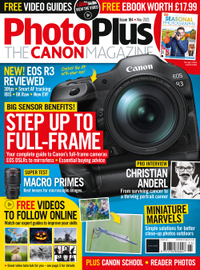
There aren't many photographic disciplines that can heighten the senses quite like motorsports photography. The air hangs heavy with the smell of petrol, it's fast, furious, intense and you'll have to think on your feet. But nail it and you'll come away with incredible racing shots full of motion, suspense and drama.
It's not for the faint hearted though as it can be technical and require strong knowledge of camera settings. The general public will also be limited to the access where you can shoot from as professional press photographers are able to get much closer to unfenced areas trackside.
• To shoot amazing automotive shots of your own, check out the best cameras for sports
Reader of PhotoPlus: The Canon Magazine, Mark, 63, is a retired lecturer who worked in the Department of Education at the University of Oxford. He travelled extensively overseas and to make downtime alone more interesting, he bought a Canon EOS 750D. After a few years, this led to an upgrade to a 5D Mark IV. Mark enjoys woodland, landscape and cityscape photography. Although he likes shooting beautiful things that don’t move, the opportunity to try fast-action motorsport was an irresistible opportunity to learn new photography skills!
So we paired him with motorsports pro Jakob Ebrey to take brilliant fast and furious motorsports shots at the UK's famous Donington Park circuit. Here's Jakob's top tips from their workshop together.

Jakob, 46, is one of the UK’s best motorsports photographers. He established JEP in 1999, now the leading national motorsports photography agency in the UK. The multi award-winning JEP team specializes in coverage of events for championships, manufacturers, teams, drivers, sponsors and suppliers. Since at 2003, he’s been based at Silverstone racetrack. He was the top man to teach our PhotoPlus Apprentice how to capture a broad range of motorsports photos on a practice day at Donington Park race circuit.
1. Shutter priority (Tv) mode
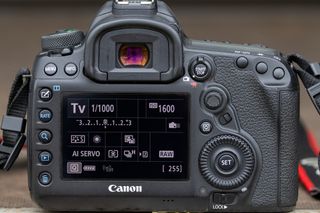
Although Mark was confident in using Manual mode for photographing landscapes, setting his aperture and shutter speed independently, it was better to use the Shutter priority (Tv) mode as Jakob suggested, so that he could enter a fast shutter speed of at least 1/1000 sec. His Canon EOS 5D Mark IV DSLR would then set the aperture automatically for a good exposure. Shutter speeds like this are crucial for freezing the very fast race cars on the track.
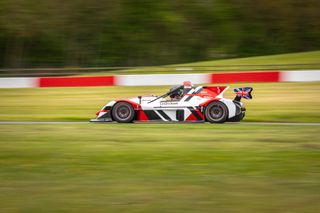
2. High ISO
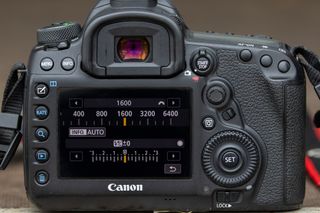
Mark was used to setting his ISO around 100-200 and using a tripod for his scenic photography, as it doesn’t matter how long his exposures are. “But with motorsports you need fast shutter speeds, and to achieve 1/1000 sec to 1/5000 sec, he needed to trust his Canon EOS camera’s sensor would deal with any noise, and use an ISO between 800-1600, depending on the light levels during the day,” advises Jakob.
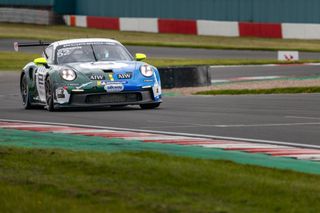
3. Starting line shots
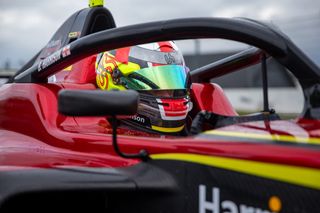
“Working for PhotoPlus, we had media accreditation for the practice day at Donington Park. This also enabled us to access the ‘assembly line’, as these F4 race cars sat on the section of track not in use on the day. This was a great spot for us to get some starting line-type photos. We took wider shots setting the scene, then close-up shots of the drivers’ helmets. These F4 drivers are F1 drivers of the future,” says Jakob.
4. AF Operation and lenses
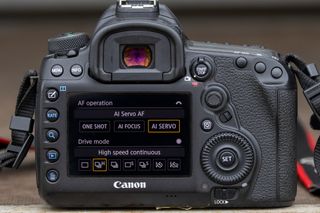
Use your Canon EOS camera’s Servo/AI Servo modes to track moving subjects with AF points while you press the AF-ON button (for back-button focusing). Mark’s EOS 5D Mark IV can manage 7fps bursts up to 21 RAW images, Jakob’s pro mirrorless R3 fires at 12fps for 1000 RAW images with the mechanical shutter or 30fps with the electronic shutter mode for 150 RAWs!
5. Map out your track day
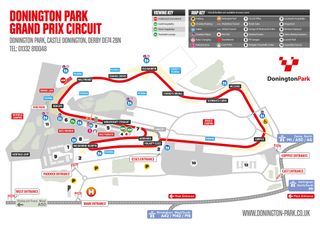
Jakob is a very experienced professional motorsports photographer, and explained the importance of planning your day. “Where will you be for each race, as it can take 20-30 minutes to walk from the start/finish line to a corner of the track, and you don’t want to be in the wrong place at the wrong time. Study the track map ahead of the first race, and speak to veteran photographers if you don’t know the circuit, or know which spots provide the best viewpoints for the best action shots, which are usually the tighter corners on tracks,” says Jakob.
6. Enjoy it and get creative
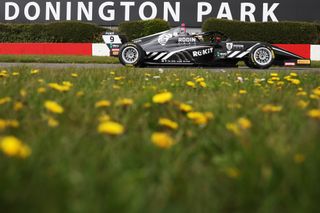
“Motorsports photography isn’t all about zooming in tight with a long lens to capture tons of similar shots of cars tightly packed together on the track! I often use my Canon RF 28-70mm F2L lens at 28mm around f/2.5 to f/3.5, to capture more of the scene, but to blur foregrounds and backgrounds so the cars remain sharp in shot,” says Jakob.
7. Intelligent AF for action
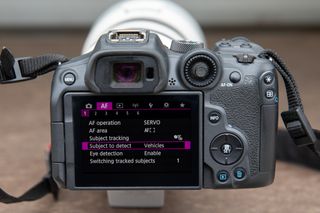
Jakob’s EOS R3 and R5 cameras both have the latest intelligent AF technology for focusing on and tracking moving targets, which you can customize to suit your subjects. “Setting the AF operation in the camera menu, with Servo selected, I can set the Subject to detect to Vehicles. Even after using the cameras for a few years, it’s still incredible as the AF locks on to cars in my frame in an instant.”
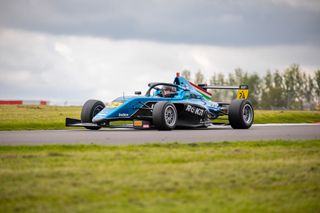
8. Rain doesn't stop play!

For a couple of the races, there was a torrential downpour, and the track was covered in water. But rather than take shelter, Jakob got excited because this meant lots of cool spray from cars, car lights and lots of cars skidding about.
9. Light and long telephoto zoom
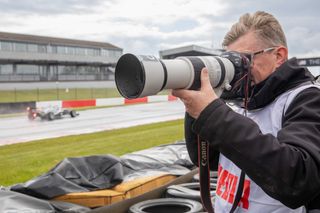
“Some people may be surprised to learn that a busy working motorsports photographer like me would use the RF 100-500mm F4.5-7.1L IS USM, as it’s not a ‘proper pro’ lens,” says Jakob. “However, this is a cracking L-series zoom lens that’s fast and responsive – I can shoot ‘wide’ at 100mm to show a pack of cars racing, then zoom in for much closer shots of individual cars at 500mm.”
10. Don't fence me in!
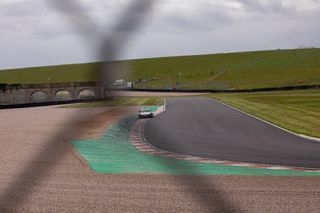
Mark couldn’t believe you could shoot through the protective metal wire fences. “Mark was trying to shoot at 100mm on his EF 100-400mm, with a narrow aperture of f/16 and also had his lens too far from the fence; three things that were the opposite of what he needed to do! I got Mark to shoot at 400mm, set a wide aperture of f/5.6 and place his lens against a gap in the fence to blur it out of shot,” says Jakob.
If you're really into automotive photography, you'll want to check out the best telephoto lenses. Jakob uses a Canon EOS R5. To see more from his stunning portfolio be sure to check out his website.
PhotoPlus: The Canon Magazine is the world's only monthly newsstand title that's 100% devoted to Canon, so you can be sure the magazine is completely relevant to your system. Every issue comes with downloadable video tutorials too.
Get the Digital Camera World Newsletter
The best camera deals, reviews, product advice, and unmissable photography news, direct to your inbox!
PhotoPlus: The Canon Magazine is the world’s only 100% Canon-focused title on the newsstand. Launched in 2007, for 14 years it has delivered news, reviews, buying guides, features, inspirational projects and tutorials on cameras, lenses, tripods, gimbals, filters, lighting and all manner of photography equipment.
Aimed squarely at enthusiast photographers who use the Canon DSLR or mirrorless camera systems, all content is tailored to Canon users – so everything from techniques to product tests are tailored to those using the EOS camera system.
Editor Peter Travers brings 14 years of experience as both a journalist and professional photographer, with Technique Editor Dan Mold shoring up the magazine with his 6 years of expertise.
- Dan MoldDeputy Editor
